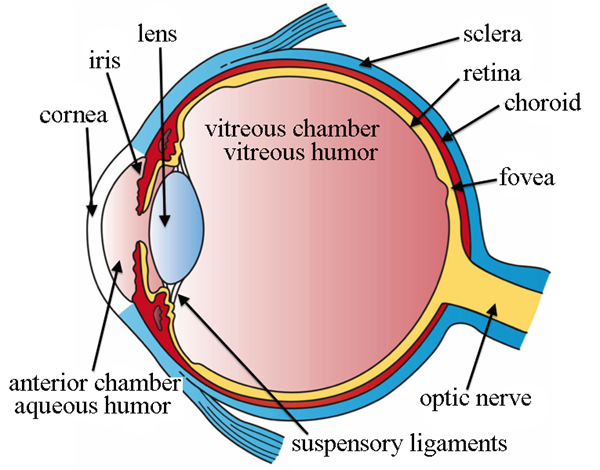PDF chapter test TRY NOW
The human eyes are the most valuable and sensitive organs responsible for vision. They are the gateway to the wonderful world.
Structure of the eye:
The eyeball has a diameter of about \(2.3\)\(cm\) and is roughly spherical in shape. It is made up of a tough membrane called the sclera, which protects the eye's internal components.

Structure of human eye
Important parts of the human eye:
Cornea:
As shown in the above figure, this is the thin and transparent layer on the front surface of the eyeball. It is the most important refracting surface. The Cornea refracts or bends light as it enters the eye, causing it to refract or bend onto the lens.
Iris:
It refers to the coloured portion of the eye. The colour could be blue, brown, or green. Each person has their own distinct colour, pattern, and texture. Iris, like a camera aperture, regulates the amount of light entering the pupil.
Pupil:
It is the centre of the Iris. It is the light's path to the retina.
Retina:
This is the eye's back surface. It is the most sensitive part of the human eye, where objects' real and inverted images are formed.
Eye Lens:
It is an important part of the human eye, and it is convex in nature.
Ciliary muscles:
The ciliary muscles hold the eye lens in place. It allows you to adjust the focal length of your eye lens to match the position of the object.
Reference:
https://commons.wikimedia.org/wiki/File:Three_Main_Layers_of_the_Eye.png
